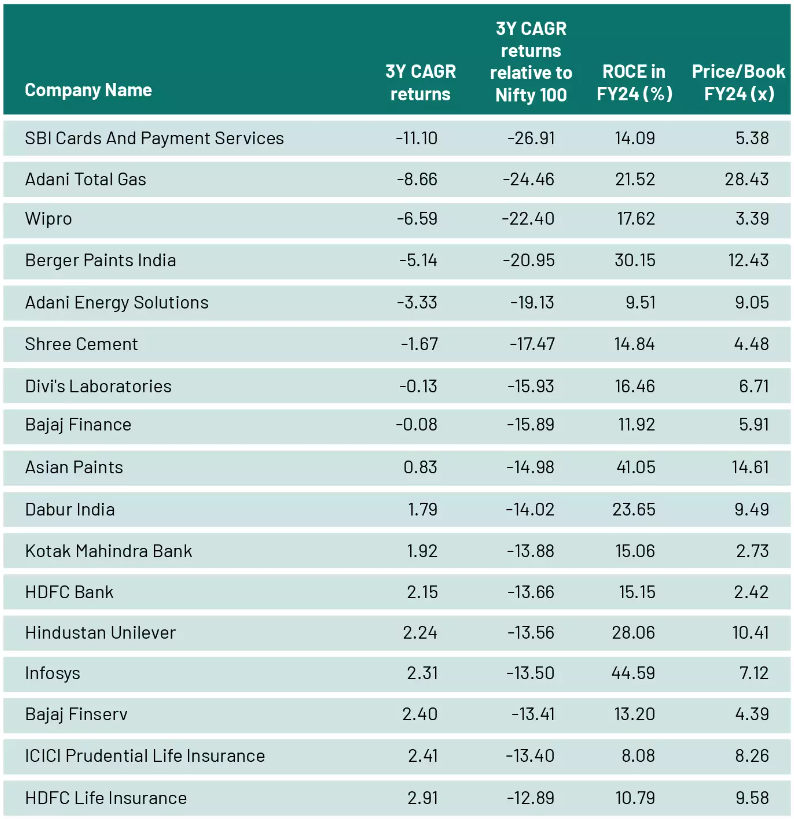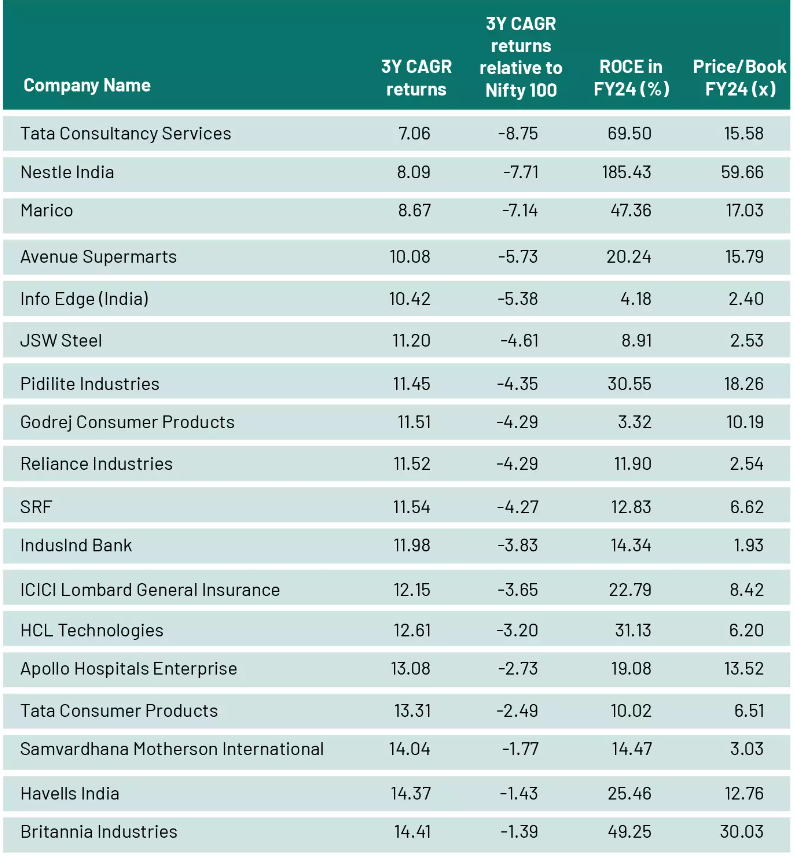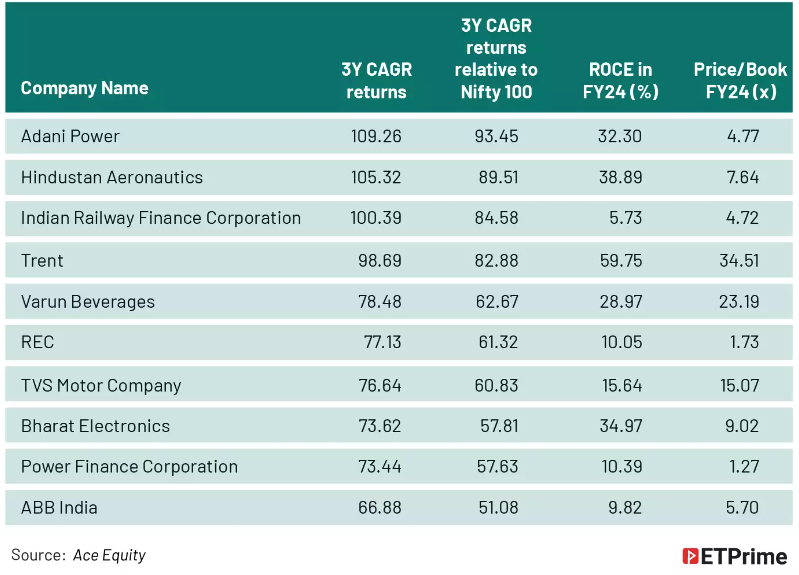
Market Overview
Starting with the Nifty index, it was flat today, but it has shown remarkable strength since the first week of August, particularly from August 4 onward. Nifty experienced a significant rally, gaining 1,000 points in less than a month, driven by key events such as the cooling off of concerns around the Japanese yen carry trade and the clear indication from the Federal Reserve about upcoming interest rate cuts. These factors propelled Nifty beyond the 25,000 mark, although the index is now facing some resistance at this level. The market is currently at a critical juncture, with potential choppiness around the 25,000 mark due to headwinds like rising crude oil prices amid brewing tensions in the Middle East and Ukraine. However, the anticipated Fed rate cuts are expected to provide some tailwinds, making it difficult to predict which factor will dominate.
Globally, markets have shown some sluggishness, but Indian markets are holding relatively steady. Despite Nifty being flat today, the lower market cap segments have performed reasonably well. Nifty is currently well above its 40-period moving average, having bounced back strongly, though it faces resistance at the 25,000 mark.
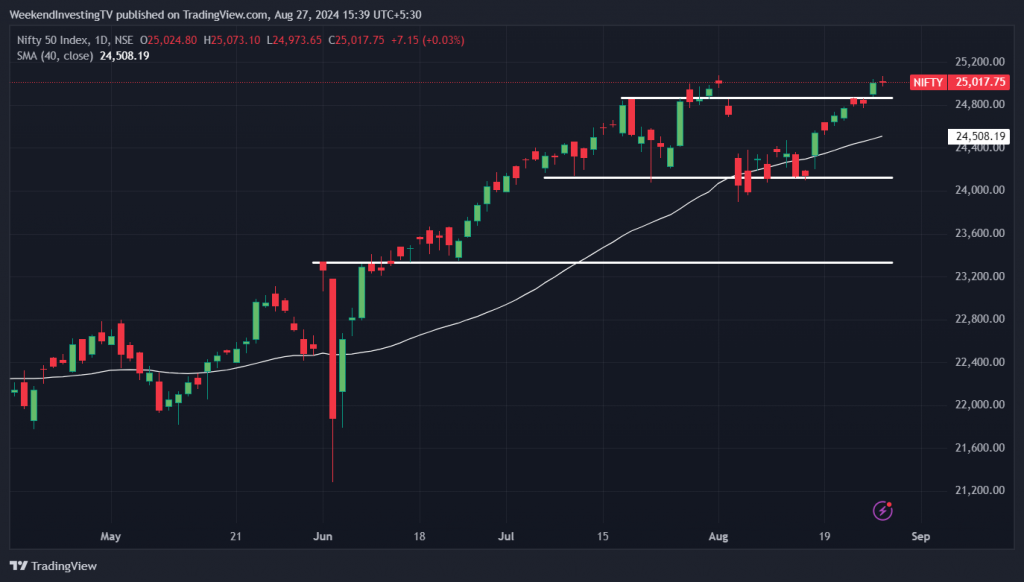
Nifty Next 50
The Nifty Junior Index also saw a slight uptick of 0.1% today, with a triple top formation observed in its chart. This index, much like Nifty, is close to making a new all-time high, reflecting the broader market’s strength.
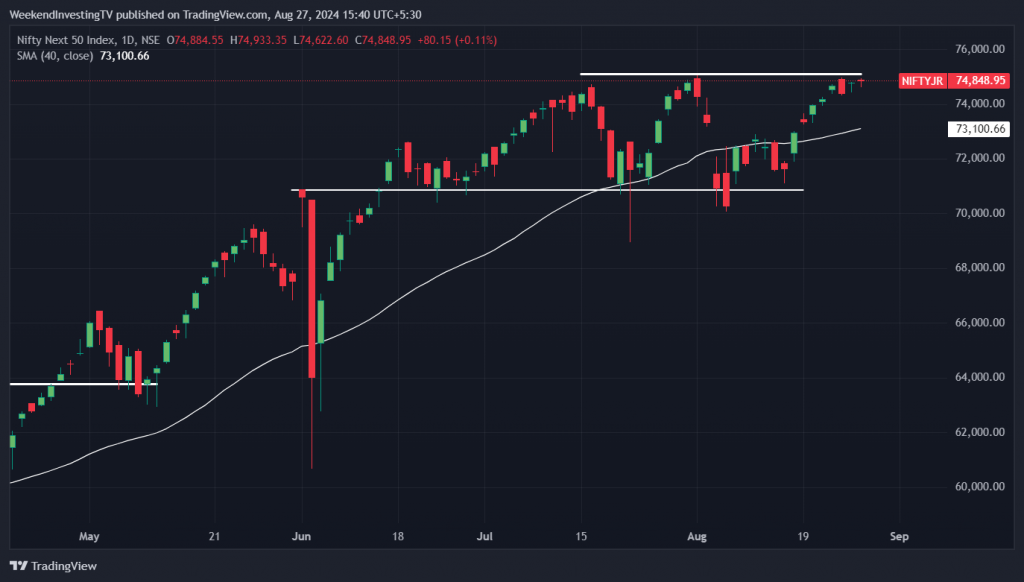
Nifty Mid and Small Cap
In the mid-cap and small-cap segments, mid-caps gained 0.5% today, and small caps showed an even stronger performance with a 0.77% gain. Small caps have been particularly strong, setting new all-time highs for two consecutive sessions. Today’s performance in small caps was robust, with a strong bounce after a retest of the support zone, resulting in a very positive outlook for this segment.
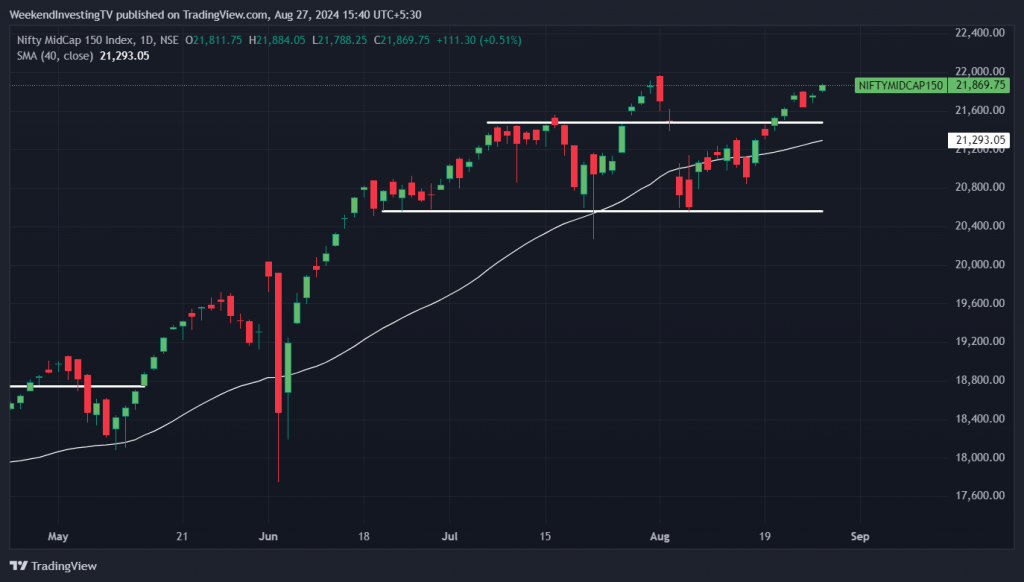
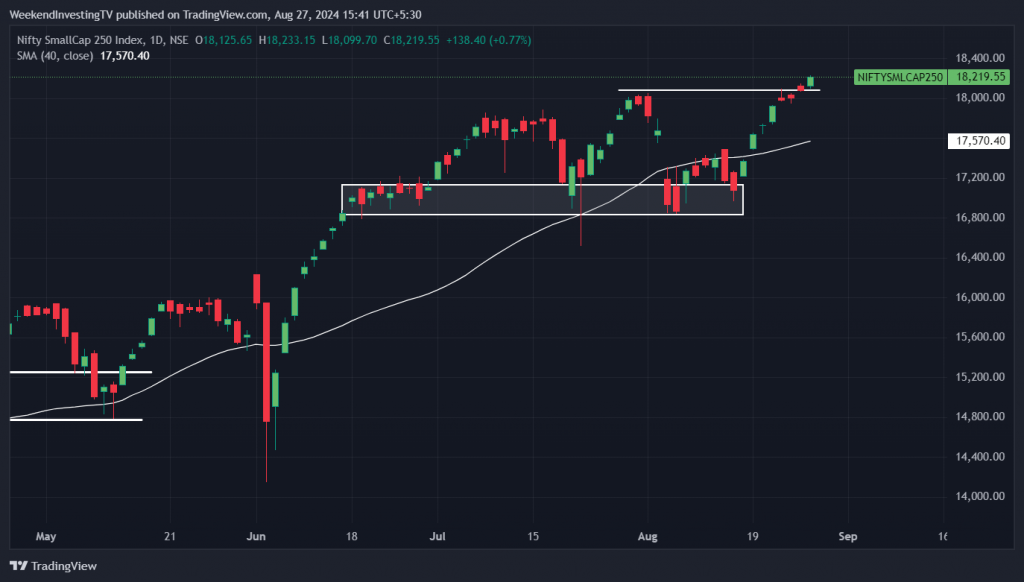
Nifty Bank Overview
The Bank Nifty index gained 0.26% today, but it’s been moving within a specific range of 51,250 to 51,300. After a significant correction on election results day, Bank Nifty dipped below its 40-period moving average, but it has since attempted to recover, now testing the resistance at 51,278. The index is currently at a crucial point, trying to break past this resistance and its 40-period moving average.
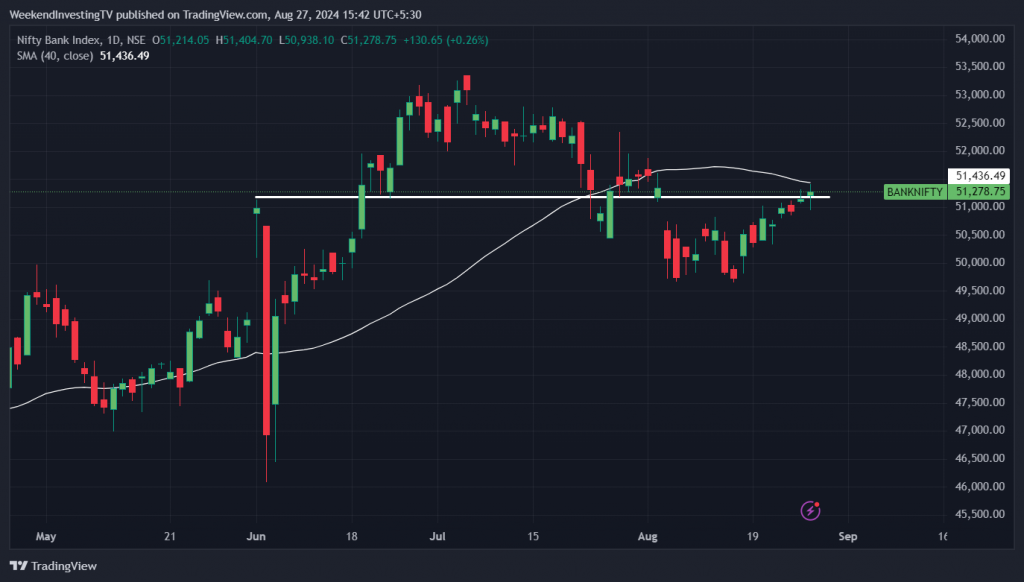
Momentum Trends
Moving on to momentum trends, the advanced decline trends show a strong market, with more than 50% of the stocks advancing in the CNX 500 universe. Out of these, 204 stocks declined today, but the overall trend remains robust, with more than 50% to 60% of stocks advancing on each of the last five days, barring a minor blip on August 23.
A new trend featured in today’s episode is the FI-DI trends, sourced from ET Markets. The data reveals very strong participation from domestic investors, who have been consistently matching the Foreign Institutional Investors (FIIs). For example, on August 13, FIIs sold about ₹2,000 crores, while Domestic Institutional Investors (DIIs) bought ₹1,239 crores, helping to keep the market stable. This pattern of domestic investors stepping in to stabilize the market has been observed on multiple occasions over the past ten days, with bullish participation from both FIIs and DIIs supporting the market’s upward momentum.

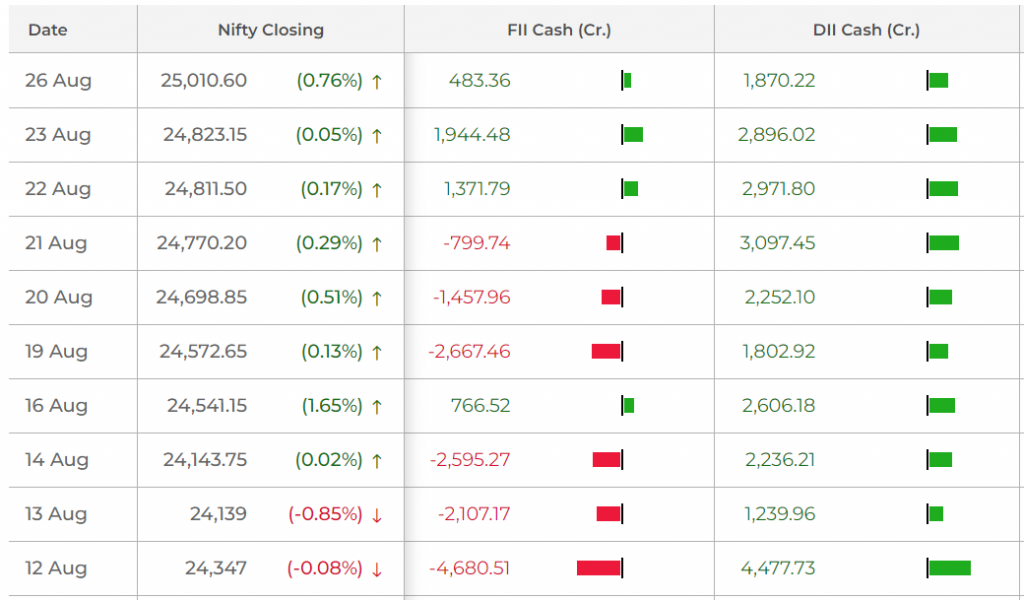
Nifty Heatmap
In today’s heat maps, the banking sector had a mixed day, with stocks like HDFC Bank being flattish, but others like Piramal Enterprises, SBI Life, and HDFC Life showing gains. ICICI Bank was up by 1%, showing good performance overall. However, the IT sector was sluggish, except for Infosys, which gained 1.28%. On the other hand, some consumption stocks like Hindustan Unilever, ITC, and Britannia took a hit, with Reliance down by 0.8%, Titan down by 0.2%, while L&T showed some strength with a 1.6% gain.
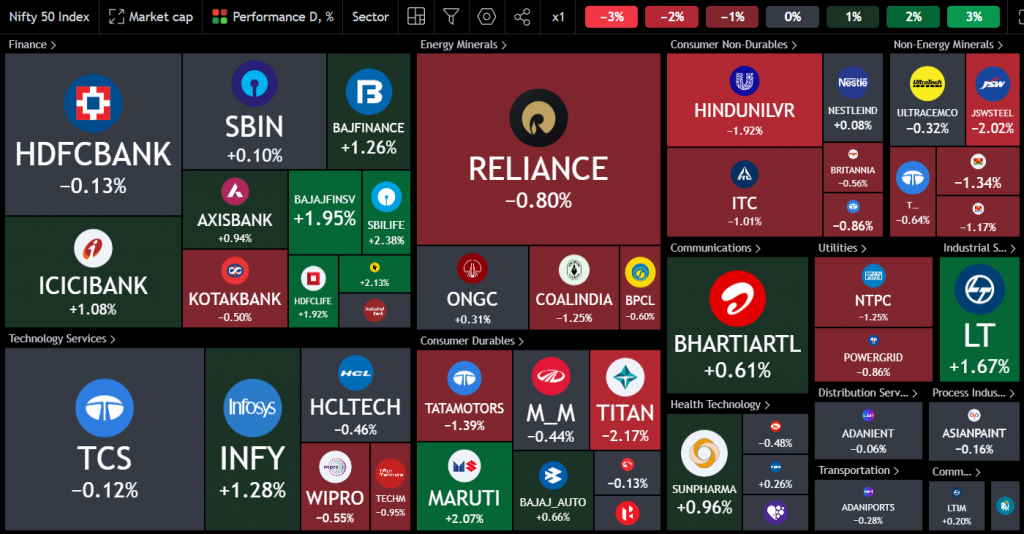
Looking at the Nifty Next 50 or Nifty Junior Index, LIC led the pack with a 2.58% gain, with other stocks like REC Limited (up 4.6%), Cholamandalam Finance (up 3.49%), and ICICI Prudential Life (up 2.89%) also performing well. Power Finance Corporation was up by 4.2%, contributing to the positive sentiment. However, some stocks like HAL, Zomato, and Jindal Steel saw declines, with Zomato being down notably.
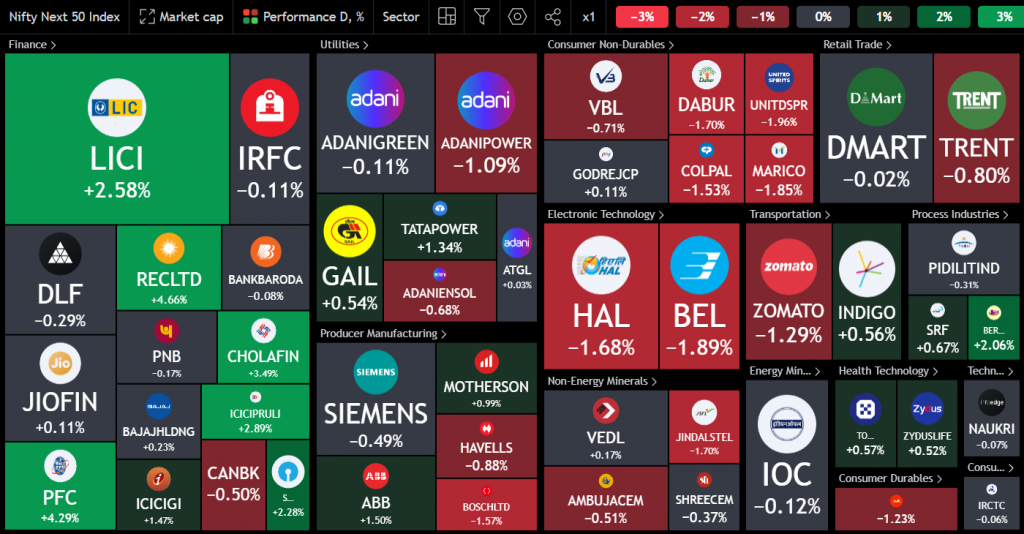
Sectoral Overview
In terms of sectoral trends, Pharma was up by 0.8% and has been the best-performing sector across various time frames, including one month, three months, and twelve months. Apart from Pharma, the overall market trend was choppy, with FMCG down by 1.1% today, though it has shown robust performance over the last three months. The Energy and Materials sectors were also sluggish today.
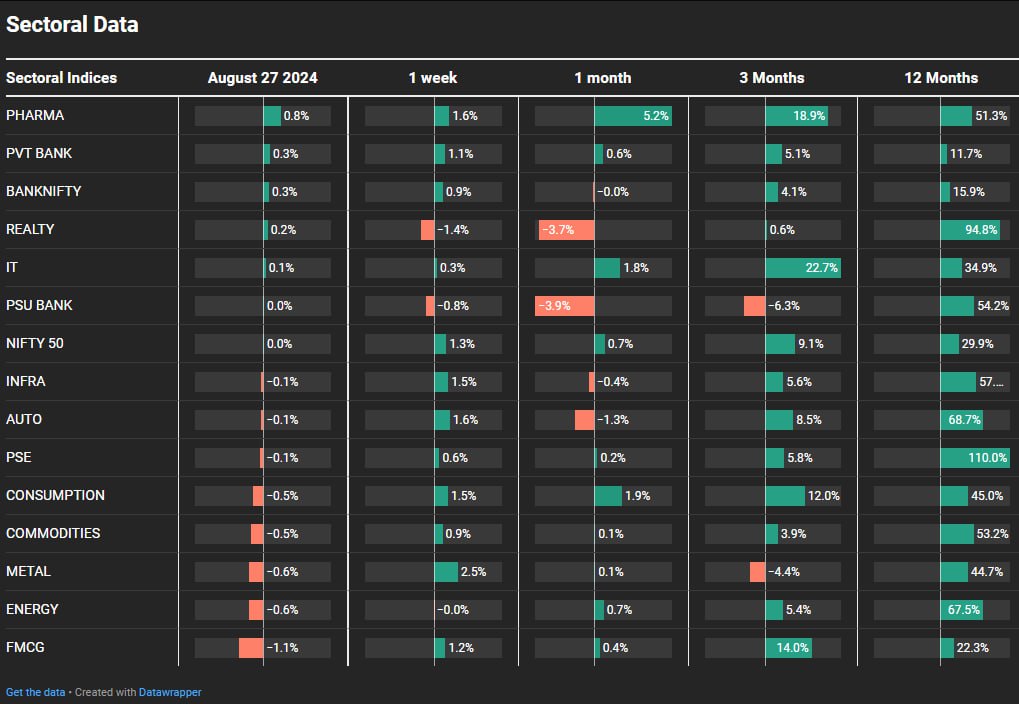
Sectors of the Day
Nifty Media Index
However, the Media sector stood out with a significant gain of 4.1%, heavily driven by Zee Entertainment, which was up by 11.6% on the news of a potential settlement with Sony to clear all disputes. The Media sector as a whole, including stocks like Dish TV, Tips Industries, Sun TV, Network 18, TV18 Broadcast, and Nazara, all performed well today.
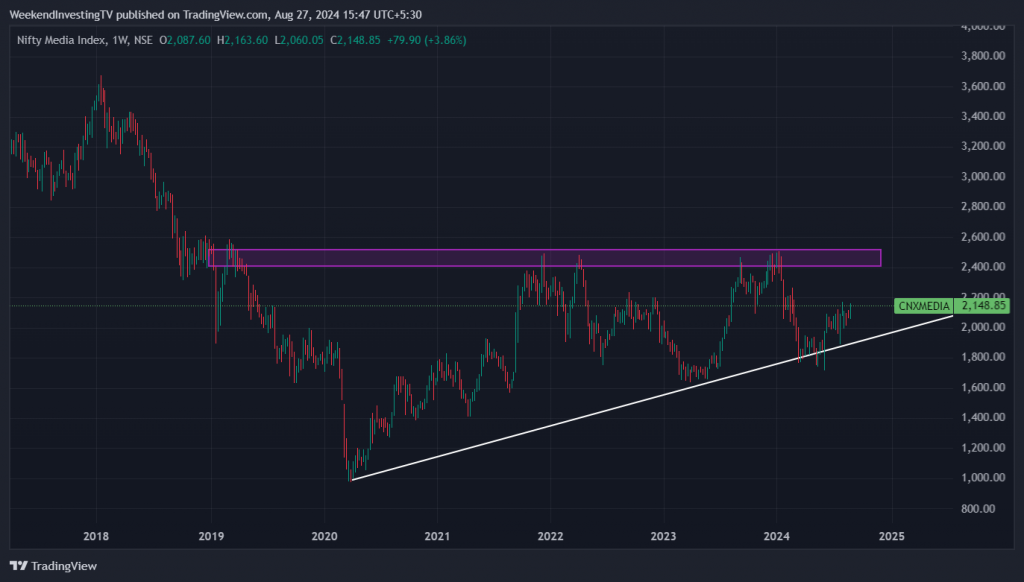
Stocks of the Day
TATA Investment Group
Tata Investment was the standout stock of the day, gaining a remarkable 19.5%. The stock has been on a strong upward trend after a long period of consolidation from 2008 to 2020. After breaking out of this consolidation, Tata Investment has shown a phenomenal rally, moving from ₹600 to ₹7,385. Today’s performance suggests the potential for another rally, following a significant period of choppiness.
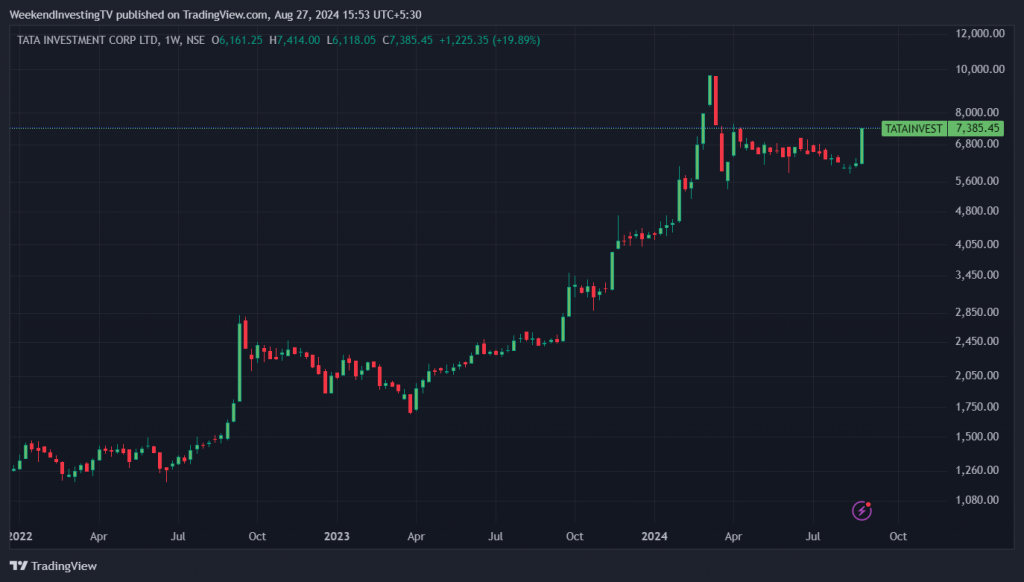
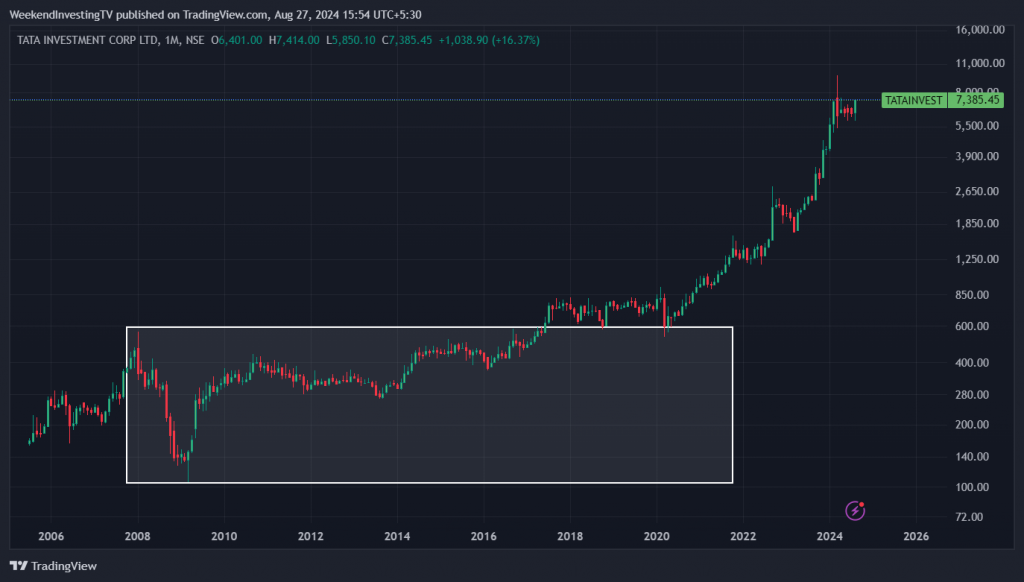
Story of the Day
You wouldn’t have imagined this data, and it comes courtesy of ET News. We’re focusing on the Nifty 100 as the underlying universe. Over the last three years, the Nifty 100 has shown an absolute gain of 45%, with a three-year compound annual growth rate (CAGR) of 13.14%. Interestingly, the majority of these gains have materialized in just the last six to seven months, beginning around April of this year. Prior to this period, the market was relatively stagnant.
Now, while the Nifty 100 as a whole has made these gains, the deeper analysis reveals an intriguing situation within the index. Out of the top 100 stocks in the Nifty 100, a substantial portion—40 stocks—have underperformed. These are not just minor players; these are some of the largest and most prominent companies in the index.
The three-year CAGR of these stocks, when compared to their relative performance with the Nifty 100, reveals a stark contrast. Some of these stocks, despite having healthy Return on Capital (RoC) and price-to-book ratios, have failed to deliver performance. For instance, SBI Cards has posted a three-year CAGR return of -11%, Adani Total Gas shows a CAGR of -8%, Wipro has returned -6%, Berger Paints has seen a CAGR of -5%, and other big names like Adani Energy, Shree Cement, and Dr. Reddy’s Laboratories are also in this category. When these stocks are compared to the Nifty 100 index, their performance is much more disappointing.
Taking Asian Paints as an example, it has a -14.9% CAGR over three years. Bajaj Finance shows a -16% CAGR, and Berger Paints is at -21%. Even stalwarts like HDFC Bank, which has always been seen as a safe investment, shows a three-year CAGR of -13.6%. On an absolute basis, HDFC Bank is up just 2%, which seems good until you compare it with the Nifty 100. Infosys, another big name, has a CAGR of -13.5%, Tech Mahindra at -11.9%, Tata Steel at -11.5%, Hindustan Unilever at -13.5%, and Kotak Mahindra Bank at -13.8%. The list goes on with Tata Consultancy Services at -9%, Nestlé at -8%, D-Mart at -5.7%, Pidilite at -4%, Reliance at -4%, IndusInd Bank at -3.8%, Britannia at -1.3%, and Apollo Hospitals at -2.73%.
These companies are not inherently flawed, but they represent a significant portion—40%—of the Nifty 100 that has not managed to beat the index. Nifty 100 itself has not been extraordinary, with a three-year CAGR of 13.14% in what is considered a strong bull market. The fact that this return is only about 1% above the long-term average and that 40% of the stocks have failed to even match this modest gain underscores the situation. The downside is even more pronounced for stocks with a negative CAGR, where a 20% decline over three years can severely impact your portfolio.
These companies, which are very popular and often seen as safe bets, raise a crucial question. Are you willing to wait 7, 8, or even 9 years for these stocks to recover and deliver strong returns? History has shown that some of these companies may take years to rebound, and the opportunity cost of waiting could be significant. Moreover, there’s always the risk of disruption in the market, whether through technological advances, shifts in consumer preferences, or changes in management. The big names you see today may not dominate the market tomorrow.
So, what is the path forward? You need to look at the best performers in the Nifty 100. Stocks like Adani Power, which has a relative CAGR of 193%, HAL at 89%, IRFC at 84%, Trent at 83%, Varun Beverages at 62%, TVS Motor at 60%, and Bharat Electronics at 57% have outperformed the market. These stocks have appeared in momentum investing strategies and have been the strength of the market. The key is to be in the top 20, 30, or 40 stocks of the index at all times, which will require you to adapt and change your portfolio with the market.
The only constant in the world is change. If you don’t change with the times, you risk underperformance. With 40% of the Nifty 100 underperforming the index over three years, the data shows that rule-based, systematic, framework-driven selection of strong stocks can yield significantly better returns. For example, while the Nifty 100 has delivered a 13% return, momentum portfolios on the Nifty 50 and Nifty Junior have returned 23% and 35% CAGR, respectively. This kind of differentiation highlights the potential of a well-structured strategy.
Imagine the impact on two portfolios that started equally but followed different strategies. One could significantly outperform the other, all based on a slight variation in selection strategy. Index investing, while popular, might not always yield the best results, especially when heavyweights in the index are underperforming. The question to ask yourself is whether you can create a rule-based framework that avoids weak stocks and overweight allocation to them, focusing instead on the winners. This approach could offer the additional alpha that traditional index investing might miss.
